Secret food gardens will keep your family fed in a post SHTF world. This article will look at the principles and practices behind food gardens hidden in plain sight.
In a world where commercial food production has come to halt and supermarkets are all but useless, where will people get food? The simple answer is that you will need to look after yourself. This could take the form of foraging, stealing, or self-production.
The issue most Preppers face is that producing food in a post-apocalyptic world, will make you a target. But there are ways of approaching a food garden that will help you stay under the radar of raiders.
We will deal with two types of food gardens hidden in plain sight, both revolving around the idea of permaculture. Permaculture simply refers to a system of gardening that requires almost zero input or maintenance. In other words, gardens that look after themselves.
Related: How To Make Money Off Grid: Making A Living From Your Homestead
In permaculture, you are working alongside nature, and not in opposition to it. This is partly what you want because irrigation systems will be a dead giveaway and pumping water is energy-intensive. Also, permaculture gardens look natural, like part of the landscape, and will thus not stand out.
In Plain Sight
We all understand the importance of food in keeping us alive. Furthermore, most of us understand that we need variety in our diets.
This can be divided into Macronutrients and Micronutrients. Macros are mainly protein and carbohydrates, the things you need a lot of.
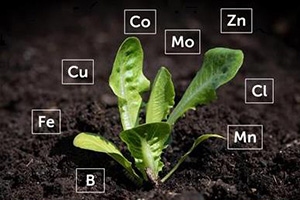
Micronutrients are the things you need in small amounts only.
It’s tricky to get enough protein from gardens, but easy to get enough carbs and micronutrients. Following the principles laid out in this article will easily supply you with enough carbs and micro’s to survive without difficulty.
We will be looking delving into Tree Guilds, while only skimming over Food Forests. Both take some time to establish, so the time to start is now. You also need to be aware that food forests and tree guilds are pretty much the same thing and overlap quite a bit, but the approach and results do differ slightly. I will deal with these differences in the article.
Food Guild
A Food Guild is a permaculture technique that revolves around fruit trees. The idea is basically that you plant fruit trees and then a range of plants around the base of the trees. These plants all support each other and work together to create a “micro-climate” and “micro-ecosystem” in which they all will thrive.
The most important thing about a guild is that it revolves around a tree. This could be a fruit tree, but other trees will do.
A food garden hidden in plain sight might make use of plain garden trees, with a variety of edibles and non-edibles planted randomly around the base of the tree. The secret is that it must look untended, chaotic, and bushy.
Various guilds should be established. Guilds are created with the following types of plants:
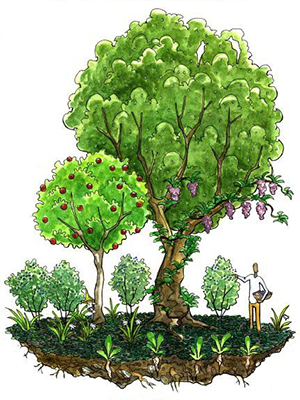 Trees – Could be fruit trees, but other trees will do. They provide shelter for smaller plants, attract birds and insects, and bring nutrients from deep in the soil to the top layer. a good variety of seasonal fruits could supply you with produce all year round. Apples, Citrus, Nuts, and Avocados produce at different times of the year.
Trees – Could be fruit trees, but other trees will do. They provide shelter for smaller plants, attract birds and insects, and bring nutrients from deep in the soil to the top layer. a good variety of seasonal fruits could supply you with produce all year round. Apples, Citrus, Nuts, and Avocados produce at different times of the year.- Shrubs – These can be plants like berry bushes, stalks like corn, or bushes like comfrey or borage. Berries and corns are all good to eat.
- Vines – They will use the tree and shrubs for support while enriching the soil. Beans like Lime and Runners are good options. You could also try Passion-Flower (Granadilla’s) or cucumbers. Beans are good sources of fiber and protein, while granadillas can be eaten or added to water for making cordials.
Related: Get An Unlimited Supply Of Beans Growing This Tree
- Herbs and Flowers – Help protect the plants in the guild. Garlic, chives, rosemary, marigolds, peppermint geraniums are all good options. They create strong chemical signals that drive away pests. You can also include thorny plants like cacti or prickly pears. Herbs are useful as medicine, flavoring, and food preservation. Flowers like marigolds can be used to create insect repellants.
- Ground Covers – Alfalfa, soy-beans, or grasses like oats and rye can all be used to bind the soil and help capture moisture while benefitting microorganisms. Wheat can be added to stews and soups while alfalfa and soy can supply protein and other micronutrients. Kale, Spinach, and Salad leaves also fall into this category.
- Rhizomes – Here you should focus on carrots, potatoes, sweet potatoes, and other diggers like beets and yams. These will supply much-needed carbs and nutrients for stews and soups.
Guilds take some time to establish, but once they are settled, will require no intervention except watering in dry spells. There are lists of companion plants for guilds, but these lists are long and fall beyond the scope of this article.
When buying seeds, make sure that you are buying “heirloom” varieties, as these produce seeds that can be used for propagation. They will also seed naturally if just left alone.
Food Forest
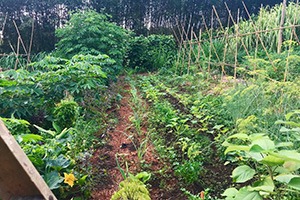 A Food Forest is a permaculture technique that revolves around a woodland setting.
A Food Forest is a permaculture technique that revolves around a woodland setting.
You create systems within that ecosystem that incorporates fruit-bearing trees and other plants, but that does not disturb the original ecosystem but works within it.
Create your food forests by introducing edible plants into currents systems. The same principles are used as above for the Tree Guilds.
Related: How To Make A Year-Round Self-Sustaining Garden
Lesser-Known Plants
There are many plants that most people would not recognize as food. Prickly pears come to mind, but also perennials like tradescantia, Good King Henry, millet, pigweed, wild lettuce, lovage, Golden Alexander, seakale, chicory, and sunflowers.
Mushrooms and Fungi
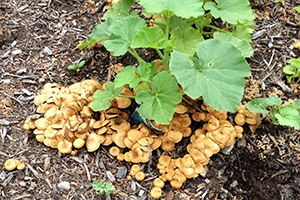 Though they occur naturally, you can also buy spores and establish them in your garden.
Though they occur naturally, you can also buy spores and establish them in your garden.
Mushrooms and fungi can be deadly. You need to be very sure you are eating the right plants. Buy a guide to make sure that even if you seeded spores, that you are not eating the wrong stuff.
Related: Edible and Non-edible Mushrooms you Find in Forests
Mushrooms are rich in fiber and nutrients and can add flavor to a variety of dishes. The beta-glucans present in many species has medicinal properties.
Secret Versus Non-Obvious
To grow a food garden hidden in plain sight would entail hiding the garden somehow. This article rather looks at how to grow food in a setting that others might not look at twice.
Any structure, regularity, or rows will draw immediate attention. As will irrigation lines.
The whole point behind guilds and food forests is that you create a messy, chaotic looking “overgrown” area. It will require some cultivation, like the removal of invasive plants, harvesting of produce, and some intervention to ensure that certain species don’t crowd out some of the beneficial plants in there.
Furthermore, I would suggest installing underground irrigation, like drip irrigation. You can keep the soil moist without drawing attention to above-ground sprayers.
It’s also a good idea to establish these garden structures close to ponds, but on the northern side of ponds if you are living in the northern hemisphere. The reflected light will be beneficial, and also ponds create “humid microclimates”, that will benefit your plants.
Once a guild or forest is established, it will supply a lot of calories and nutrients at very low input levels. They will also bear produce for many years, so are well worth the effort of establishing.
So grab your shovel and get planting!
You may also like:
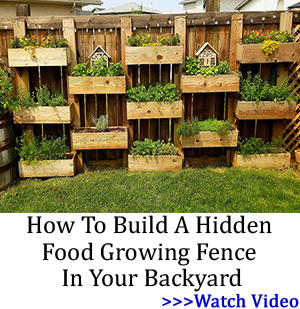 Bury An Egg In Your Garden Soil, What Happens Few Days Later Will Surprise You
Bury An Egg In Your Garden Soil, What Happens Few Days Later Will Surprise You
The Most Powerful Medicinal Plants You Should Have Around When SHTF (Video)

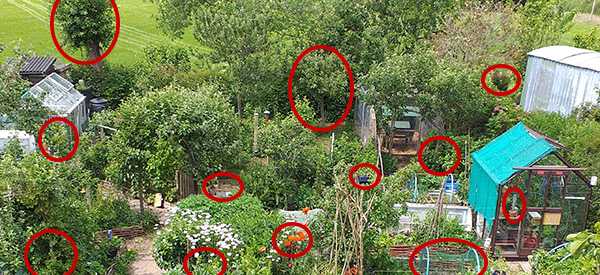


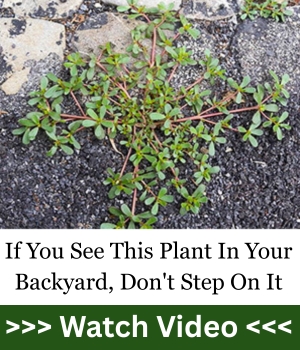
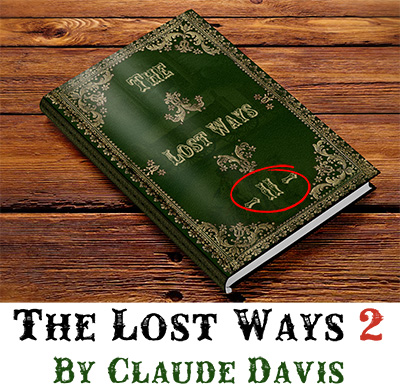
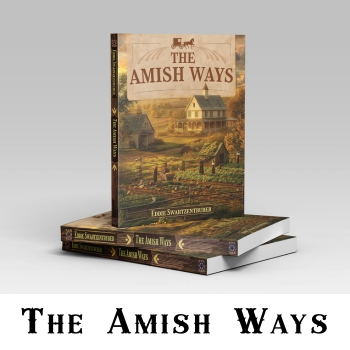

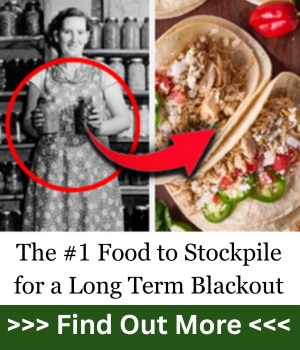
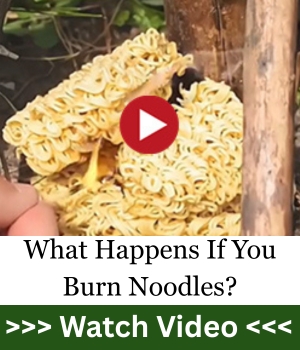





Since we lost so many plants in our freezing temps, along with snow in Texas, it will be fun to incorporate veggies instead of other decorative plants in the border this year. In fact, I was going to do it anyway, so the weather just made it easier since there are so many “holes” that need filled. It will look lush and I will be eating off it.
I have grapes, blueberries, raspberries, asparagus and many herbs in my garden and enjoy being able to harvest every year without too much work. I am planning to add artichokes this year which I am excited about. Thanks for this useful article. It has given me more to think about and ideas for gardening in the front yard that will not be too obvious. 🙂
these articles are always so good,the ideas that they give us are always well thought out and easy to understand.we live in the uk but i have started canning and drying food your articles have helped us so much thank you
There will come a time when only the ones who know how to plant will eat
You are correct. Plus remember the ones that are able to grow food and eat, should also hone up on their target practice, as self protection may be required once the lszy ones have figured out where to get free veggies and fruits.
Craig: Plenty of free food out in the brush. Same in the garden, if they can find it, LOL. The most obvious has thorns, of course. Cactus, wolfberries, dates, citrus (trifoliate oranges will survive a zone 6 winter). https://ediblelandscaping.com/products/tropicals/Citrus/TrifoliateOrange.php You can find prickly pear native to every state but Alaska and Hawaii. Hawthorn makes a nice, eatable landscape plant, as well. the list is long. niio
This is just a wonderful article to get you going full speed ahead with your spring garden plans! I would only caution that depending upon where you live to check for any potential issues with the health and quality of your garden soil and beware of neighborhood critters who will also want to share in your harvest!
Hidden is eatable ornamentals. Tradescantia (wandering Jew) is good as a ground cover. Most people will not eat ‘wind’ dates but all they are is regular dates. Choke cherries and run cherries are very good. Capulin, a sweet rum cherry native to the desert, is becoming a commercial fruit. That one bears continually for weeks. Sand cherries, for those lucky enough to live in cooler areas, very good. hawthorn berries. Certain types of lily are onions–and a few are toxic! Hudson Seedman carries the eatable ones. Garlic, Rocambole in the north is the best quality. South, the Creoles love heat and thrive even in Arizona. A plus, Creole is bred to store for up to a year like in my garage. or, take what you want and let the bulbs in the ground to come back year after year. It’s recommended you save tea bags(used ones because fresh will burn plants) to dust the plats and chase off onion maggots and so on. Ramps, wild garlic, chives. All very tasty and very good for health. A spring green, Rocket will grow anywhere. It thrives for a few weeks in the desert, here, and all summer in places like Alaska. The list is endless. What does well in your area that looks nice–like hawksbill–is hidden food. Clover in the yard attracts wild animals and birds. Pigeons and doves will feed on ‘ornamental’ sorghum and other purty grains. A sack of whole grain scratch feed can be planted on a quarter acre in summer and be harvested later or cut for hay or mulch to build the soil. Fava beans, peas, and chick peas are early spring plants, and old-timers always scattered barley and other seeds under the plants just prior to harvest. Never leave ground bare, but always have a living root in the soil. Radishes going to seed are nice. budding stalks are tasty. seed pods when green are also. it will self-sow! so will turnips and others in the cabbage family. niio
Nopal is very easy to grow and even easier to propagate if your climate is right.https://en.wikipedia.org/wiki/Nopal
I’ve grown it but haven’t eaten it yet. Neighbors told me it tastes a lot like green beans. I like green beans.
In my area, Cocoplum is popular as a hedge. It puts out fruit once a year iirc. Most people around here never notice. https://en.wikipedia.org/wiki/Chrysobalanus_icaco
Pigeon Peas grow as a small bush with nice yellow flowers. A lot of folks would walk by one and think nothing of it. And, no trellis required.https://en.wikipedia.org/wiki/Pigeon_pea
ST: Every state in the lower 48 has a variety of nopale native to it. If you can grow cocoplum, you can find something. the variety Castro used in Cuba is native there and a salt-resistant swamp plant.
We have 3 main varieties, 2 domesticated from Mexico and 1 native-local. Pads get harvested when half the size of mature. Spines can be scraped (when still the right size for eating, the spines are usually soft), but most people like to grill them and get rid of spines that way. Freezing is a good way to keep them, but pickled is, as well. The way we go thru them, we might need another crock 🙂
There’s a major problem with Wiki. It’s easy to change articles, so researchers do not like it. The owner has been making it harder to do, but it still happens. A shame because he’s pretty cool and open minded but not a fanatic on anything. As far as I know, anything aggie is OK. niio
red;
I know WIki is iffy. But the articles are brief and serve as a decent launchpad for interested parties (generally by having a basic description, photo, and botanical names.
I am planning on doing some grilling soon! I’ll be taking a couple of pads with me to finally try it out.
ST, yes, I like the aggie pages. Politics, religion, and so on, no. We do donate to keep him going.
The hawksbill already went to bloom. But, the Indian Rush Peas haven’t. It was too dry last winter, but I’m hoping we got enough in the last two storms to feed the nopales and mesquite. All those in the yard get watered once a month whether they need it or not.
When cleaning tun, the fruit, a half-dozen go in a colander under running water. shake well and the thornes will come off. Mind smaller ones and check before eating. niio
I have 4 varities of nopale here. There are two natives. Both small but one so small its called pigmy. The others are some I got a start of in the city about an hour away. Both somewhat larger pads but one is really wicked with lots of long wicked spines. The much bigger pads seen down there is the one I want a start of. Large pads and fruit and yes some spines on it but easy enough to clean. I love it when owners offer the fruits free. I make juice, jelley, syrup and one year even wine from it.
We eat the pads both pickled and grilled. I have them growing along one side of the property as a started deterant to folks coming in that way off a side road. All of them bear edible fruit. Israel is making a prostate cancer medicine from nopale flowers and fruits.
I found Orach seeds listed on ebay. Had to look it up. It’s mountain spinach. It turns out that selIer has dozens of edible wild plants listed for sale as seed. Ordering enough seeds to get their free shipping offer was worth my while. I have mullen, borrage, the mountain spinach and more ready to plant. Its just about seed starting time here so finding them was perfect timing. They came a week ago. Some are bushes like service berry. Some are fast things like the mountain spinach. I didn’t order everything but I’m adding close to 30 new wiId edibles. And some I’ll let go wild here on my property. I’m adding 2 formed small ponds for growing watercress, cattails, and a water rice from India as an experiment. I like trying new things. I have lots of flowers to plant all through the garden. It makes it pretty and helps fill in bare spots. The better the ground is covered the less water is lost due to evaporation.
I was sick last year so I’m adding space in the garden and starting a lot of new things to see if I can grow them here. Usually I just add a bit each year. I missed the garden so much I’m adding a lot of space and new plants. I’ve started flats of seedings the past couple of days with many more to go. I’ve added 2 metal shelves in my living room to start seedlings. The big double window I’m using faces North East and has worked well in the past. By next year I hope to have one of the the two planned greenhouses ready to use.
While I do plan a big garden the wild plantings are just as important to get established. I have seed for spearmint and peppermint. Those will be grown scattered about in pots.
I was given grape seeds as bonuses this year so I’ll start some. Find out if they will survive here. Some will and some won’t.
I’m curious about the variegated plantain. It looks like the plantain that grows from coast to coast but it’s variegated. The hosta plants were developed from plantain into showier plants. Still edibles but grow in shady places as an ornamental. I have seed for one with dark green leaves and blue flowers. I’m scattering Johnny jump ups in the shade around my ancient apricot tree. They lived there for years with only an occasional watering and self seeded. I was away 12 years and in that time they died out.
The garden is watered with soaker hoses. A sprinkler on the desert wasts water. The few things like the Johnny jump ups that don’t have a soaker hose can by watered by hand once in a while. I leave the soaker hoses in place in the garden. The only place I’ll pull hose this year is across the driveway. I’ll leave a hose there for the new fruit trees and for new wildflowers while they are getting established. I’ll disconnect at the driveway. The flowerbed and medicinals bed near my grapes will share a hose here and can connect across as needed to water the new fruit trees. In the yard I have multiple hoses with multiple connectors so watering will be done by planned sections. Pulling hoses like in past years is still too hard since covid last spring.
Small plantings of corn are incorporated in the plan. 3 are native corn from this region and one from Maine. The other is an old comercial bantam. So early, midseason, and fall harvest. 3 are dent corn. Can be eaten immature as roasing ears but grown for making corn meal. 2 are sweet corn. Runner beans will climb the corn. Bush beans will be tucked in here and there. Not really a hugh garden but very full. No open mono crop rows. Everything interpIanted by design. Many edible greens everywhere for cooked and salad greens. Much to be dried or canned. Many kinds of root vegetables. They help enrich the variety but also enrich the soil. Red clover will be scattered throughout also. Some for tea but mostly building the soil. I don’t mind it also draws in the doves. I love their cooing sounds in the morning. If they are damaging crops I’ll cover them with bird netting. The new strawberry bed will be covered anyway. I have arms full of bird netting. Next year I’ll plant red clover in a different spot. It gets moved around to build up the soil. I love mornings and evenings in the garden.
ClergyLady: I wish these foot-long nopal grew up your way, but aggies say this zone is the coldest they can handle. Israel and the PAN in Mexico got together to develop types of thornless nopal, and a new American acacia that feeds both non-Asian silk worms and makes frankincense. Some new pads are already 4 inches long.
Orache is domesticated saltbush. I let it go to seed and it comes back in cool weather when it rains. Definitely need to get bird netting in place, and get the garden planted. niio
Secret and hidden are 2 very different things. Secrets are always exposed. Hidden can remain hidden for generations. Hidden is eatable ornamental plants and even animals. Most ornamental plants started out as food or medicinal plants. You can buy eatable dahlias, something once common on the plate in central America. A dove cote, bantam chickens, ‘pet’ wild quail, feral rabbits like a neighbor has. Go for hidden.
I just discovered (thank you, ClergyLady) that hosta are eatable! https://www.ruralsprout.com/eat-hostas/ niio
SHLM & HaB (peace & love). Thank you for your kindness and help. The Name of the Creator is Hayah asher Hayah, as what He told Mose (Exodus 3:14), preserved in the Hebrew Scriptures. There is a curse to the G-o-d name (Isaiah 65:11-12), preserved in the Hebrew Scriptures. All followers of the Messiah are to do the 7 appointed times (Leviticus 23), but no more animal sacrifices, following the Crucifixion of the Messiah. We are now of the order of MLK TSDQ (King, righteous), to Whom ABRaHM tithed. Ask the Messiah to be your personal Savior. He is the Atoning Offering for mankind for the remission of sin ( 1 John 2:1-2). He said to him, I am the way, the truth and the life. No one comes to the Father except through me (John 14:6). If you believe the Messiah died on the cross, & Resurrected three days later (presenting Himself as First Fruits to the Father), please ask Him to be your Savior. He is the ONLY way to Everlasting Life.
He is love. walk in beauty.
I’m always amazed at how many folks don’t recognize common garden plants. They wouldn’t know edibles right under their noses. I like living learning about new, unusual, or wiId edibles that I can incorporated into my yard or on my property.
I’m trying a subartic tomato that is one of the fastest producing tomatoes. It is a determinate so not a particularly long vine and all are ready pretty much in a 3 week window. Good for canning. I’ll grow a variety for canning and eating. I always grow a yellow pear tomato just to have them for snacking when I’m out in the garden. They are pretty along with some red pear and other cherry tomatoes in jars. I lightly pickle them for relish trays. The pickle juice along with some tomatoes makes a fine vinegarette salad dressing. I have a flat of the subartic tomatoes started. This week I’ll start the others. I’ll start extras. Any I don’t use I’ll set on a table by the road for neighbors to help themselves. I’m encouraging neighbors to garden. I’m using up old seeds this years and storing sealed seed. I may tuck in garden plants around the new fruit trees. They can share water.
I adding more asparagus and replacing rhubarb and adding globe artichokes all from seed. It’s slower till eating time but seems stronger in this climate that way.
I’m excited about adding hazelnuts and elderberries. I have plants but I also have seed. I’ll try them both ways. Same with raspberries and blackberries. I have seed for cattails from two very different sources. The formed ponds I’ve had for years. The water from cleaning the small duck pond will run into those ponds. It will create a more humid area for the garden and I’ll try growing edible aquatic plants. In years past I’ve grown water lilies. Pretty but I’ll try something different this time. I won’t bother with fish. Water snakes follow the community irrigation ditch and will come eat them. The ditch flows along my west Westside property line. Not on my property there. But snakes emptied my ponds in years past. I feel not great need to feed them.
My new ducks I bought going into winter layed the first egg a few days ago. They are much more winter hardy than most chickens. I may aim for more ducks and fewer chickens. The rabbits are also very winter hardy. Both are quieter than chickens. That may be a good set of good qualities to be looking at.
I have a new incubator. I may try raising more ducks before fall. My first spring rabbits are due in a few days. I don’t like to breed the does continually. I’d prefer they nurse their young 6-8 weeks then wait a while to breed again. It is possible to have a doe give birth, breed within hours and be giving birth again in 4 weeks while the other litter is still nursing. I have 4 does and a buck. I’m restarting after neighbors dogs killed most of my rabbits and destroyed many cages. I bought 2 new does and a young buck. He’s just oId enough now for breeding. I use rabbit droppings for starting the garden. Its a cold fertilizer. Great for fast green growth. Composted duck and chicken droppings are great for fruiting time. So are banana peels. I dry banana peels and then break them up. Then crush saved egg shells. Those are put in containers and soak as tomatoes start budding. They will be watered with that soaking tea watered down. It helps fruit to set. Rabbit dropping are good for mostly green growth. Perfect for growing leafy greens. The wild areas often get some rabbit droppings. It’s good helping them get established.
I scatter grains to grow as well. I have millet, alfalfa, wheat, oats, sorgum and field corn that I harvest for the critters and straw and leaves for mulching with. Ducks will will eat it all. Chickens are a bit more picky.
I have 4 varities of nopale here. There are two natives. Both small but one so small its called pigmy. The others are some I got a start of in the city about an hour away. Both somewhat larger pads but one is really wicked with lots of long wicked spines. The much bigger pads seen down there is the one I want a start of. Large pads and fruit and yes some spines on it but easy enough to clean. I love it when owners offer the fruits free. I make juice, jelley, syrup and one year even wine from it.
We eat the pads both pickled and grilled. I have them growing along one side of the property as a started deterant to folks coming in that way off a side road. All of them bear edible fruit. Israel is making a prostate cancer medicine from nopale flowers and fruits.
I found Orach seeds listed on ebay. Had to look it up. It’s mountain spinach. It turns out that selIer has dozens of edible wild plants listed for sale as seed. Ordering enough seeds to get their free shipping offer was worth my while. I have mullen, borrage, the mountain spinach and more ready to plant. Its just about seed starting time here so finding them was perfect timing. They came a week ago. Some are bushes like service berry. Some are fast things like the mountain spinach. I didn’t order everything but I’m adding close to 30 new wiId edibles. And some I’ll let go wild here on my property. I’m adding 2 formed small ponds for growing watercress, cattails, and a water rice from India as an experiment. I like trying new things. I have lots of flowers to plant all through the garden. It makes it pretty and helps fill in bare spots. The better the ground is covered the less water is lost due to evaporation.
I was sick last year so I’m adding space in the garden and starting a lot of new things to see if I can grow them here. Usually I just add a bit each year. I missed the garden so much I’m adding a lot of space and new plants. I’ve started flats of seedings the past couple of days with many more to go. I’ve added 2 metal shelves in my living room to start seedlings. The big double window I’m using faces North East and has worked well in the past. By next year I hope to have one of the the two planned greenhouses ready to use.
While I do plan a big garden the wild plantings are just as important to get established. I have seed for spearmint and peppermint. Those will be grown scattered about in pots.
I was given grape seeds as bonuses this year so I’ll start some. Find out if they will survive here. Some will and some won’t.
I’m curious about the variegated plantain. It looks like the plantain that grows from coast to coast but it’s variegated. The hosta plants were developed from plantain into showier plants. Still edibles but grow in shady places as an ornamental. I have seed for one with dark green leaves and blue flowers. I’m scattering Johnny jump ups in the shade around my ancient apricot tree. They lived there for years with only an occasional watering and self seeded. I was away 12 years and in that time they died out.
The garden is watered with soaker hoses. A sprinkler on the desert wasts water. The few things like the Johnny jump ups that don’t have a soaker hose can by watered by hand once in a while. I leave the soaker hoses in place in the garden. The only place I’ll pull hose this year is across the driveway. I’ll leave a hose there for the new fruit trees and for new wildflowers while they are getting established. I’ll disconnect at the driveway. The flowerbed and medicinals bed near my grapes will share a hose here and can connect across as needed to water the new fruit trees. In the yard I have multiple hoses with multiple connectors so watering will be done by planned sections. Pulling hoses like in past years is still too hard since covid last spring.
Small plantings of corn are incorporated in the plan. 3 are native corn from this region and one from Maine. The other is an old comercial bantam. So early, midseason, and fall harvest. 3 are dent corn. Can be eaten immature as roasing ears but grown for making corn meal. 2 are sweet corn. Runner beans will climb the corn. Bush beans will be tucked in here and there. Not really a hugh garden but very full. No open mono crop rows. Everything interpIanted by design. Many edible greens everywhere for cooked and salad greens. Much to be dried or canned. Many kinds of root vegetables. They help enrich the variety but also enrich the soil. Red clover will be scattered throughout also. Some for tea but mostly building the soil. I don’t mind it also draws in the doves. I love their cooing sounds in the morning. If they are damaging crops I’ll cover them with bird netting. The new strawberry bed will be covered anyway. I have arms full of bird netting. Next year I’ll plant red clover in a different spot. It gets moved around to build up the soil. I love mornings and evenings in the garden.
By the way I clean the tunas, nopal fruit, of all those tiny “stickers” using tongs over a fire. It works perfectly. The warmed fruit is easier to squeeze the juice from as well.
Clergylady: I enjoyed your travelog journey through your garden. Best wishes for a great harvest year round. if
Jerusalem Artichoke, also called Sun Chokes, look like small blossom sunflowers and will spread on their own over the years. The tuber is big and fat like potatoes, tastes great and is easy to harvest. They will make you fart, and some people get cramps, but that is a feature if you want to convince armed marauders forcing you to tell them what is keeping you alive, that they might not want to take them for their troops.
Scruffy: They’re a great part of the hidden gardens. If you do not want to pass the gas, let them in the ground about 3 months after the tops die. The inulin converts to fructose and glucose. Another way to avoid the gas is cook with lemon juice or slice and soak in lightly salted water overnight. niio
https://modernfarmer.com/2018/02/jerusalem-artichoke-sunchoke-recipe-prevents-gas/
I live on what for us is a normal suburban block – or what was one 50 years ago. Here we have established a veritable “forest” of food producers. We have several types of apples, pears, peach, nectarines, orange, lemon, lime, almond, nashi, pomegranate, avocado, various plums, and mulberry. We also have several culinary herbs in pots – mints oregano, ginger, turmeric, rosemary, and more. Even a vanilla vine growing indoors. We also have small berry fruits in strawberries and blueberries. Then we also have a small vegetable patch with potatoes, onions an shallots, beetroot, sliverbeet/chard, and more. This year we are also starting with more medicinal herbs. Between us, the grandkids, friends and neighbours, lots get to enjoy these. I also get cutting or seeds and grow them to pass on. I figure the more that do so, the safer we will all be.
Hidden gardens are plants people do not think of as being food. In Native America, women owned the land and crops and were responsible to breeding plants. Everything had to be good to eat, and pretty.
Most ornamental veggies and grain are more than welcome even by oddball gated communities. There are kales, cabbages, and corn that are ornamental. Beans like scarlet runners, amaranth, wild sun flowers, asparagus, purple-flowering peas, hackberry, citrus, Canna lily (achira), and far more. In the desert, Indian Rice Grass is an ornamental, yucca is food and fiber, mesquite makes crops of beans. Ours is in bloom for the 3rd time this year. Acasia are in bloom. There are prickly pear, fruit and a vegetable, for every state in the lower 48. Look around. Swamp milkweed pods are cooked when young and used for cream cheese. http://www.eattheweeds.com/asclepias-some-like-it-hot-some-like-it-cold-2/
This is great as long as you don’t have bears, deer, mice, and other woodland animals going through your yard daily. The bears destroyed our fruit trees and only an electric fence keeps them out of my traditional garden.
Hi Anita , This year I’m noticing lots of small holes in the leaves on my low growing plants…not sure what i should do…still should be edible i guess… for now my plants are there for a long term off grid emergency during the winter months. I want to look into making a fig leaf tea to store for the winter.. Also.mixing in more edibles ,herbs,ect. within the old ornamental landscape. Mostly geared for the winter months of survival. That should be the best to focus on….right ?…..lot’s to learn on my quarter acre lot in the city.